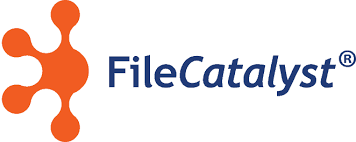What Is Application Sharing Software?
Program sharing software is an effective technology that enables several users to remotely access and operate the same program in real time. This technology provides a seamless collaborative experience by removing the requirement for physical meetings or presence in the same area. With the growing popularity of remote work and virtual teams, application sharing software has become an essential tool for enterprises.
One of the most notable aspects of application sharing software is the ability to share and control certain apps rather than the full desktop. This allows users to choose which program to share, making it ideal for presentations, demos, and team discussions. Furthermore, application sharing software provides a number of features and options to improve the collaborative experience.
These include capabilities like annotation, screen sharing, file transfer, and chat, which allow users to connect and communicate more efficiently. Furthermore, some software includes additional capabilities such as session recording and remote control, which adds value to its functionality. Another key benefit of application sharing software is its interoperability with various operating systems.
These solutions can smoothly distribute apps across several platforms, including Windows, Mac, and Linux, making them perfect for cross-platform collaboration. When choosing application sharing software, there are a few important considerations. To begin, the software's simplicity of use and user-friendliness are crucial, since it should not require substantial training or technical expertise to function.
Second, security features like as encryption and password protection are critical for ensuring the confidentiality of shared data. Scalability and software price are also important considerations. As your organization expands, the software should be able to accommodate a growing number of users without incurring considerable additional expenditures. Many application sharing software providers provide various price levels, making it affordable for both small and big firms.
What Are the Recent Trends in Application Sharing Software?
Application sharing software has grown in popularity in recent years, as more firms embrace remote work and collaboration. As technology grew, so did the capabilities and patterns of application sharing software.
we'll look at the most recent developments in application sharing software to help you make an informed purchasing decision.
1. Higher demand for web-based solutions In recent years, there has been a noticeable move toward web-based application sharing options. This trend is being driven by the growing need for remote work and the proliferation of cloud-based solutions. Web-based application sharing software enables users to access and collaborate on apps from any device with an internet connection, making it easier for teams to work together regardless of location.
2. Integration of Virtual Meeting Platforms Another development in application sharing software is the incorporation of virtual meeting platforms. This enables users to smoothly exchange apps during a video conference or virtual meeting session. This approach has shown to be particularly advantageous for remote teams, significantly improving cooperation and productivity.
3. Multiplatform compatibility The expansion of remote work and the usage of numerous devices has increased the demand for cross-platform application sharing software. Users increasingly expect to be able to transfer apps from their desktop to their laptop, tablet, or even mobile phone without interruption. As a buyer, you must ensure that the software you select is compatible with the devices and operating systems used by your team.
4. Real-time Collaboration Features Real-time collaboration capabilities are the most recent trend in application sharing software. This enables numerous team members to concurrently access and work on the same application, resulting in greater efficiency and production. These features frequently include the ability to observe changes made by other team members in real time, which makes the collaboration process more fluid and transparent.
5. Improved security. With the rise of remote work, security has become a significant priority for enterprises adopting application sharing tools. As a result, there has been a shift toward stronger security features in these software systems. This includes end-to-end encryption, two-factor authentication, and data management controls.
Benefits of Using Application Sharing Software
Application sharing software is a sophisticated tool that allows organizations and people to share, collaborate, and manage apps in real time. With the rise of remote work, this software has emerged as a critical tool for increasing productivity and efficiency across a wide range of businesses.
In this buyer's guide, we'll look at the top benefits of adopting application sharing software.
1. Seamless Collaboration: One of the most significant benefits of application sharing software is the ability to enable seamless collaboration. This program enables numerous people to collaborate on the same application, regardless of their location. This eliminates the need for physical meetings and allows teams to collaborate efficiently in real time.
2. Improved Communication: Communication is essential in every organization, and application sharing software elevates it to the next level. Team members may successfully interact and offer rapid feedback using capabilities like as screen sharing, video conference, and chat. This not only saves time, but also boosts productivity and decision-making abilities.
3. Increased Productivity: Application sharing software allows users to access apps remotely, which may be a game changer for enterprises. It eliminates the requirement for physical presence, allowing people to work from anywhere and at any time. This not only increases their production, but also saves time and resources for the organisation.
4. Cost-Effective: Not every firm can afford to invest in costly equipment for each employee. Businesses may save money on hardware expenditures by using application sharing software, which can be accessed from any device with an internet connection. It also removes the need for travel, which lowers the costs connected with physical meetings.
5. Simple Troubleshooting: Application sharing software includes functions like as remote control, file transfer, and session recording, which are extremely useful for IT assistance and troubleshooting. IT specialists may remotely access the user's system, diagnose the problem, and give a speedy solution. This saves time and resources for both the end user and the IT department.
6. Improved Security: Security is a big concern when exchanging programs and data via the internet. Most application sharing software includes extensive security methods, such as end-to-end encryption and password protection, to safeguard the confidentiality of your information. This offers consumers the confidence to disclose sensitive information without fear of data breaches.
Important Factors to Consider While Purchasing Application Sharing Software?
When looking for the best application sharing software, there are a few crucial elements to consider to ensure you make an informed decision. These considerations will assist you in determining which software is most suited to your requirements and will provide a seamless and efficient sharing experience for you and your team. Here are the top things to consider while buying for application sharing software:
1. Compatibility with your devices and software: Before making a purchase, ensure that the program is compatible with your team members' devices and operating systems. This ensures that everyone can smoothly share and work on programs without encountering compatibility difficulties.
2. User-friendly interface and functionality: Look for software with an easy-to-use interface and capabilities like screen sharing, annotation, and remote management. These features will improve teamwork and make sharing more efficient.
3. Security and privacy: Because application sharing entails exchanging sensitive information and data, it is critical to select software that has security features to secure your information. To keep your data secure, look for features such as end-to-end encryption and password protection.
4. Customization options: Each team has distinct requirements, and the software should be able to meet those demands. Look for software with customizable features, such as unique user settings and branding possibilities.
5. Scalability and pricing: When selecting software, consider your team's present size as well as potential expansion. Make sure the program has scalable choices to suit your team's expansion, and make sure the pricing plans are within your budget.
6. Customer support: You may undoubtedly experience technical troubles when using the product. In such instances, timely and dependable customer service is critical. Look for software that provides 24-hour assistance to ensure smooth functioning and prompt resolution of any problems. By taking these crucial variables into account, you can make an informed decision about which application sharing software is best for your team. Consider your team's specific requirements and prioritize features that will improve collaboration, security, and convenience of use. With the appropriate tools, you can boost productivity and streamline communication among your team.
What Are the Key Features to Look for in Application Sharing Software?
When it comes to choosing application sharing software, there are a few crucial things to consider. Application sharing software enables users to share their computer displays with others in real time, making it an indispensable tool for virtual collaboration and remote working. In this buyer's guide, we'll go over the important features that may improve your communication and collaboration experience using application sharing software.
1. Compatibility: The first and most significant characteristic to look for in application sharing software is compatibility. It should be interoperable with a variety of operating systems, including Windows, Mac, and Linux, to offer a consistent user experience across all platforms.
2. Usability: Look for software that is simple to install, navigate, and utilize. A complicated user interface can reduce productivity and may necessitate significant training. Choose an application sharing program with an easy-to-use interface and low technical knowledge.
3. Speed and Stability: One of the main goals of application sharing software is to communicate information in real time. As a result, it is critical to pick software that provides fast and reliable connectivity. It should be capable of handling huge files and enabling seamless video and audio conferencing with no lag or disturbances.
4. Security: Sharing sensitive information raises significant security concerns. Look for software that provides end-to-end encryption and secure data transfer to keep your shared material private and safe from cyber attacks.
5. Customization options: The flexibility to tailor your sharing settings can significantly improve your collaborative experience. Look for software that lets you select which areas of your screen to share, modify image quality, and restrict access to certain functions based on your requirements.
6. Collaboration tools: In addition to screen sharing, many application sharing applications include virtual whiteboards, screen annotations, and file sharing features. These tools may substantially improve your teamwork and make remote cooperation feel like an in-person experience.
7. Customer support: If you face any technical difficulties or want assistance with the program, it is critical to have dependable customer service in place. Look for software that provides several customer service channels, such as email, live chat, or phone, to ensure timely and effective help. By taking these crucial aspects into account, buyers can guarantee that they are buying in the best application sharing software that fulfills their individual requirements and improves their virtual collaboration experience. Remember to read reviews, compare costs, and take advantage of free samples or demos before making a purchase. In today's digital world, using the correct application sharing software may help you increase productivity, expedite communication, and improve cooperation.
Why Do Businesses Need Application Sharing Software?
Application sharing software is a useful tool for firms aiming to boost efficiency, cooperation, and overall productivity. This sort of software enables users to share their computer displays and apps with others in real time, making it ideal for remote or distributed teams. But why does a firm require application sharing software? Let's take a deeper look at the primary advantages of this technology.
1. Improved Collaboration: One of the key reasons firms use application sharing software is to help team members collaborate more effectively. Multiple employees may work on the same document or project at the same time thanks to screen sharing, which eliminates the need for frequent back-and-forth communication and updates. This not only saves time, but it also enhances job quality by providing real-time feedback and input.
2. Increased Flexibility: In today's fast-paced corporate environment, flexibility is essential. Team members may use application sharing software to access and share apps and data from anywhere, as long as they have an internet connection. This is especially useful for remote teams or personnel who travel regularly, since it allows them to stay connected and productive from wherever.
3. Cost Savings: Application sharing software may help firms save both time and money. This technology may save employers a lot of money on travel, lodging, and other expenditures by removing the need to go to in-person meetings and trainings. Furthermore, it can decrease the need for specialist equipment and IT support, making it an affordable option for businesses of all sizes.
4. Increased Productivity: Application sharing software also helps to enhance productivity inside a business. The ability to easily share screens, documents, and programs allows for more efficient and error-free work completion. It also facilitates improved communication and decision-making, which reduces project completion times.
5. Stronger Security: In today's digital world, data security is a significant priority for enterprises. Application sharing software prevents sensitive information from being shared or retained on individual devices, lowering the risk of data breaches or leaks. This technology also improves management and monitoring, ensuring that only authorized staff have access to important information.
How Much Time Is Required to Implement Application Sharing Software?
When it comes to adopting application sharing software, several things might influence the timetable. These include software complexity, organizational size and structure, and the amount of customisation required. The usual implementation time for application sharing software ranges from a few days to several weeks.
This period is partly determined by the software provider's resources and support. To achieve a seamless and efficient installation process, you must first understand your organization's objectives and goals for adopting the program. This will assist you in selecting the best solution while also allowing for efficient planning and customization.
The real installation process often consists of creating user accounts and permissions, connecting the software with your current systems, and teaching your team on how to utilize it efficiently. It is also vital to remember that the implementation process is ongoing. Continuous support and upgrades from the program supplier may be required to optimize and improve your use of the product.
What Is the Level of Customization Available in Application Sharing Software?
When it comes to application sharing software, potential customers should examine the amount of customisation offered. This refers to the capacity to customize the program to meet the needs and preferences of the user or business. Here are some important aspects to consider when considering the amount of customisation in application sharing software:
1. User Interface modification: The first area of modification to consider is the user interface. Can you adjust the program to reflect your organization's branding and design preferences? Can you alter or add/remove elements to better fit your workflow? These are essential questions to raise.
2. Access and Security Customization: Controlling access and security settings is an important part of customization. Can you provide multiple degrees of access to different users? Can you restrict particular actions or capabilities to specific users? These are crucial for ensuring data privacy and security.
3. Integration with Other apps: Businesses must be able to combine application sharing software with other tools and apps. This may include project management software, customer relationship management tools, or communication platforms. The degree of customisation possible for integrations is worth considering.
4. Custom Feature Development: Some application sharing software may have the ability to create custom features or add-ons. This might be beneficial for businesses who have particular requirements that are not addressed by the software's standard functionality. However, this may come with an extra expense.
5. User and Device Settings: It is important to examine the amount of customisation available for particular users and devices. Can users change their own settings and preferences? Can the program be used with several devices and operating systems? Overall, the amount of customization offered by application sharing software varies substantially. Buyers should thoroughly consider their individual requirements and compare the customization choices provided by various software vendors. This ensures that the software chosen is adapted to the specific needs and preferences of the company or individual user.
Which Industries can benefit the most from Application Sharing Software?
In today's fast-paced and networked corporate environment, application sharing software is becoming more prevalent. This unique technology enables users to share their computer displays, apps, and data with others in real time, independent of location or device. So, what industries will profit the most from this software? The answer is almost every sector that demands teamwork and communication.
However, there are several businesses that can especially profit from application sharing software.
1. Information Technology (IT) Industry: For teams working on intricate coding and software development projects, application sharing software might be a game changer. It enables developers to exchange their code, debug bugs collaboratively, and offer immediate feedback, so boosting the efficiency and efficacy of their efforts.
2. Healthcare business: In the healthcare business, prompt communication and teamwork are crucial for providing quality treatment. Application sharing software allows physicians, nurses, and other healthcare workers to interact in real time, share medical information, and give remote consultations, all of which improve patient care quality.
3. Education Industry: Application sharing software may transform traditional classrooms into digital platforms. Teachers may share their screens and give virtual lectures, allowing students to study from anywhere. Furthermore, professors may provide remote support to students, making education more participatory and interesting.
4. Finance business: The finance business handles sensitive financial data, therefore real-time cooperation is critical for making informed decisions. Financial analysts, accountants, and other professionals can use application sharing software to communicate complicated data, conduct computations collaboratively, and make educated decisions while working from separate locations.
5. Sales and Marketing: Sales and marketing teams can benefit from application sharing software. It enables users to share presentations, do product demos, and offer remote sales pitches, which improves communication and speeds up the sales process.
Conclusion
Finally, investing in application sharing software may help your organization by improving communication, collaboration, and efficiency. It is critical to thoroughly compare the features and capabilities of various software alternatives in order to discover the greatest fit for your individual requirements and budget.Consider the size of your business, the amount of security needed, and any integrations or customizations you may desire. Keep in mind the software's ease of use and the company's quality of customer assistance.
By considering these aspects, you can definitely select the best application sharing software to improve your team's workflow and communication. With the appropriate software, you may increase productivity and streamline procedures, leading to better commercial success.






















